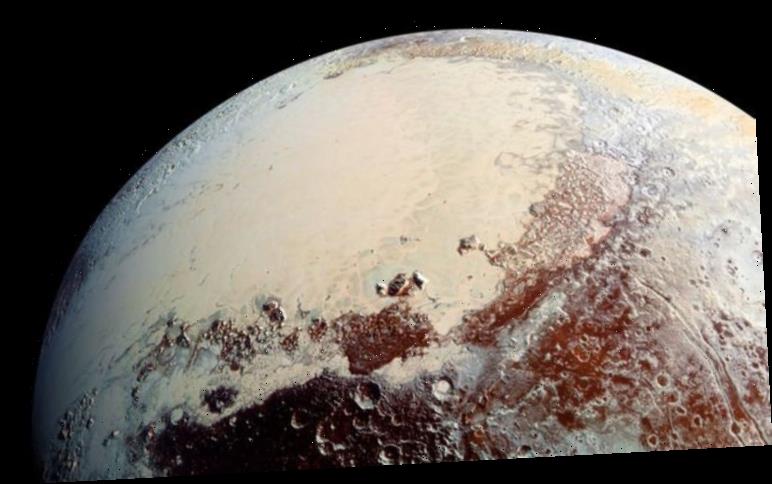
/cdn.vox-cdn.com/uploads/chorus_image/image/48937685/NASA_Pluto_Polar_Region_New_Horizons.0.0.jpg)
When Pluto was reclassified in 2006 from a planet to a dwarf planet, there was widespread outrage on behalf of the demoted planet. The New Horizons team worked for 15 years to plan and execute this flyby and Pluto paid us back in spades!” “We could not have explored a more fascinating or scientifically important planet at the edge of our solar system. “It’s clear to me that the solar system saved the best for last!” said Alan Stern, New Horizons principal investigator from the Southwest Research Institute, Boulder, Colorado. In the years since that groundbreaking flyby, nearly every conjecture about Pluto possibly being an inert ball of ice has been thrown out the window or flipped on its head. On July 14, 2015, NASA’s New Horizons spacecraft made its historic flight through the Pluto system – providing the first close-up images of Pluto and its moons and collecting other data that has transformed our understanding of these mysterious worlds on the solar system’s outer frontier. This fascinating world has blue skies, spinning moons, mountains as high as the Rockies, and it snows – but the snow is red. Pluto – which is smaller than Earth’s Moon – has a heart-shaped glacier that’s the size of Texas and Oklahoma. There may be millions of these icy objects, collectively referred to as Kuiper Belt objects (KBOs) or trans-Neptunian objects (TNOs), in this distant region of our solar system. New Horizons is expected to come as close as 12,500 km from Pluto at 11:49 GMT on Tuesday.Pluto is a dwarf planet in the Kuiper Belt, a donut-shaped region of icy bodies beyond the orbit of Neptune.

We have a couple of opportunities to uplink those updated timing information as well as the most precise estimate that we have for Pluto’s orbit and it’s satellites to the spacecraft right before the closest approach,” said Holdridge. “So far it is looking really good, looks like we are converging and we are happy with this results. New Horizons will have just 30 minutes to conduct the most important part of the mission, including photographing Pluto and Charon, determining what the icy worlds are made of and scanning Pluto’s atmosphere – all done while the probe and Pluto finally cross paths. New Horizons will conduct its science on the fly, much like NASA’s Pioneer, Mariner and Voyager missions of the 1960s to the 1980s, when exploration of the solar system began.īuilt lean, New Horizons does not carry propellant for a braking burn to slow down and slip into orbit around Pluto.Ī computer program to orchestra every aspect of the spacecraft’s pass by Pluto began on Tuesday, after a nail-biting computer crash that suspended science operations for three days. Scientists believe the Kuiper Belt holds fossils from the formation of the solar system 4.6 billion years ago. Ironically, it was the discovery of the Kuiper Belt that provided the scientific motivation and money for a mission to Pluto.

Six months after New Horizons launched and with more than 40 Kuiper Belt objects on the books, the International Astronomical Union made a controversial call to reclassify Pluto as a “dwarf planet”.Ī Kuiper Belt is regarded as a region of the Solar System that exists beyond the eight planets.Īstronomers have since discovered about 2,000 more Kuiper Belt residents out of a population estimated at hundreds of thousands. An artist impression of the New Horizons spacecraft that is expected to come as close as 12,500km from Pluto at 11:49 GMT on Tuesday Ĭlipping along 14km per second, New Horizons awoke in January to begin observations of Pluto and its primary moon, Charon, located beyond Neptune in the Kuiper Belt region, which was discovered in 1992.īefore then, Pluto was considered an odd, outlier ninth planet of the solar system, smaller than Earth’s moon and out of place among the gas giants that occupy what was previously considered the outer solar system.


 0 kommentar(er)
0 kommentar(er)
